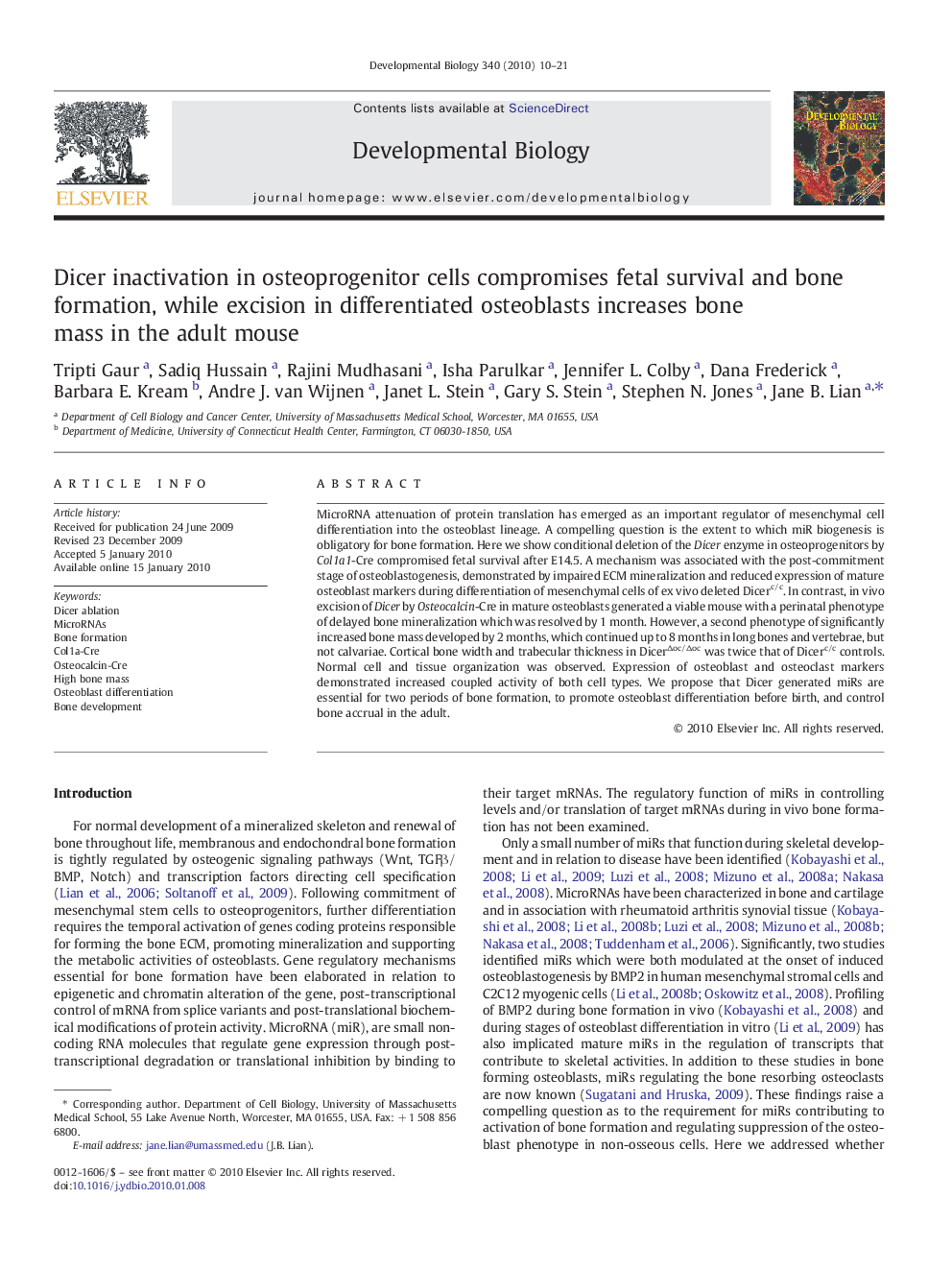| Article ID | Journal | Published Year | Pages | File Type |
|---|---|---|---|---|
| 10933119 | Developmental Biology | 2010 | 12 Pages |
Abstract
MicroRNA attenuation of protein translation has emerged as an important regulator of mesenchymal cell differentiation into the osteoblast lineage. A compelling question is the extent to which miR biogenesis is obligatory for bone formation. Here we show conditional deletion of the Dicer enzyme in osteoprogenitors by Col1a1-Cre compromised fetal survival after E14.5. A mechanism was associated with the post-commitment stage of osteoblastogenesis, demonstrated by impaired ECM mineralization and reduced expression of mature osteoblast markers during differentiation of mesenchymal cells of ex vivo deleted Dicerc/c. In contrast, in vivo excision of Dicer by Osteocalcin-Cre in mature osteoblasts generated a viable mouse with a perinatal phenotype of delayed bone mineralization which was resolved by 1Â month. However, a second phenotype of significantly increased bone mass developed by 2Â months, which continued up to 8Â months in long bones and vertebrae, but not calvariae. Cortical bone width and trabecular thickness in DicerÎoc/Îoc was twice that of Dicerc/c controls. Normal cell and tissue organization was observed. Expression of osteoblast and osteoclast markers demonstrated increased coupled activity of both cell types. We propose that Dicer generated miRs are essential for two periods of bone formation, to promote osteoblast differentiation before birth, and control bone accrual in the adult.
Related Topics
Life Sciences
Biochemistry, Genetics and Molecular Biology
Cell Biology
Authors
Tripti Gaur, Sadiq Hussain, Rajini Mudhasani, Isha Parulkar, Jennifer L. Colby, Dana Frederick, Barbara E. Kream, Andre J. van Wijnen, Janet L. Stein, Gary S. Stein, Stephen N. Jones, Jane B. Lian,
